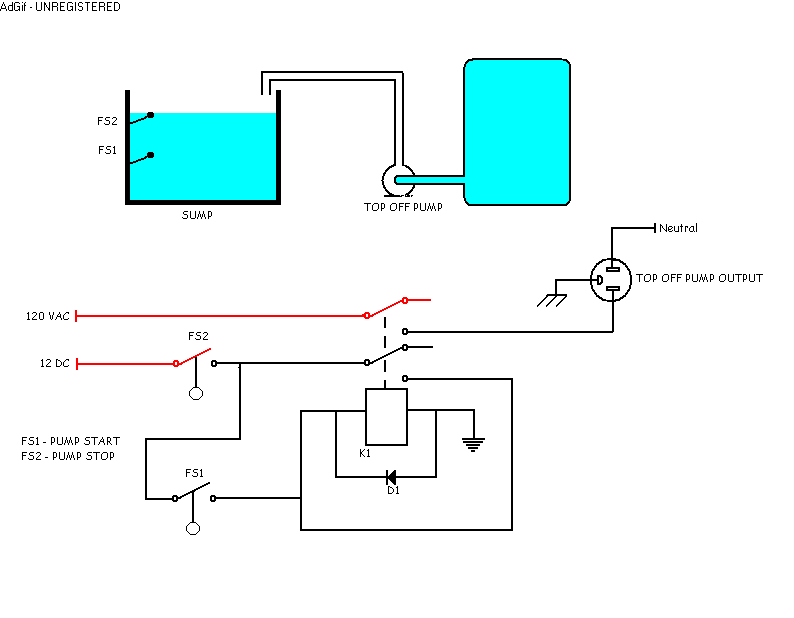The "latch" is controlled by two float switches, thus cutting the number of cycles in half, or more. Low level on, latches... high level unlatches the ciruit e.g. cuts the power to a relay coil. Again not dealing with load per se, although your float switch is under load when the contacts are closed. (current flows even at 0V; ~12V is what they are designed to handle, 120VAC is what burns up the contacts.)
This is rather than having a single float that can "work" the contacts with a small change in water level.
Personally, I find using an Appex to control a simple system such as an ATO, a bit much; and moreso because it does not incorporate any sort of failsafe, using a single control signal. Using a latching circuit would make your setup a little more complex, but still would not provide a failsafe. It is simply to save wear and tear on the float switch. E.G. more reliable.
Rather than carry 120VAC, the "120VAC" line would carry your signal.

